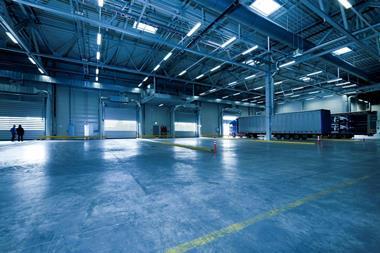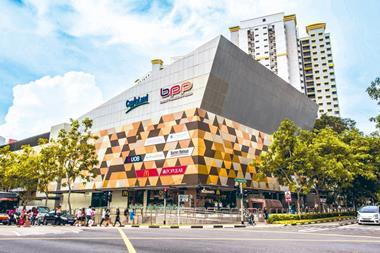While quality properties in Tokyo's office and retail sectors are appealing and the city has major value-add opportunities, the liquidity drought in Asia is curbing market activity. Meanwhile economic concerns have boosted transparency, as Paul Benjamin reports
Investors nervously watching for signs of a full recession in the US and Europe can draw some cheer from the fact that the world's second-biggest economy has emerged from the sub-prime debacle far less bruised. Growth forecasts for Japan are weak at about 1% this year and next. But at least it's growth.Japan is still stinging from its own episode of boom and bust, and has brutal experience of how a financial crisis can hit the real economy. Such was the hype in the late 1980s that land prices in the capital went stratospheric. Legend has it that an area the size of Disneyland around the Imperial Palace was reckoned to be worth more than the whole of California.When prices then plummeted by as much as 80% in two years, it took the country more than a decade - the so-called lost decade - before tentative recovery started in 2002. Although Japanese banks have not been bloodied by sub-prime fallout to the degree suffered by the Americans and Europeans, the consequent slowing of these important markets will have a knock-on effect, and Tokyo real estate is definitely coming off the boil it enjoyed in 2007. Data from IPD show that while income returns across all sectors are falling gently, capital returns are dropping more markedly from their peak last autumn.Toshiro Nishioka, managing director of IPD Japan, says there has been a recent flurry of bankruptcies among property developers and construction firms. He adds: "Private firms are having difficulty refinancing. Liquidity is low and the number of transactions is very limited. A handful of investors and fund managers have sufficient equity to invest in funds."Simon Treacy, CEO of Macquarie GPA, agrees. "Compared with a year ago it's a very different world," he says. "Liquidity is drying up very quickly, and Japan and Australia have been the hardest hit in Asia. Japanese REITs have lost over a third of their value in the past 12 months, and the number of transactions has halved. Pricing will continue to decline but next year there's a ray of hope that there will be a slight recovery."It's a capital crisis, but there are signs that the longer the crunch continues, the more it will start to impact on fundamentals - and the first sector to show that is residential."However, we are sitting on a war chest and plan to spend heavily, focusing on Tokyo and Osaka. We think Japan is going to be a golden opportunity. When liquidity returns it will return to the big markets like Tokyo first, which will be first to bottom out."Tokyo, which translates as "eastern capital", is a highly sophisticated, heavily developed metropolis of 8 million people, or more than 12 million including its greater metropolitan area. Founded in the 12th century, Tokyo became the imperial capital in 1868 but much of it was destroyed by an earthquake in 1923, and again by bombing raids during World War II. Consequently, much of the city was rebuilt after the war and then showcased to the world for the 1964 Olympics.This pattern of development resulted in many buildings being put up around the same time. Treacy adds: "Tokyo has thousands of buildings which are more than 25 years old and therefore there are a lot of buildings which require refurbishment to add value - and that suits a lot of investors."Tokyo held The Economist magazine's title of the most expensive city in the world for 14 years until 2006. The city is one of the major global centres for financial services but is also the base of many of Japan's world-beating corporations, and a key wholesaling centre for manufactured goods. Japan is a string of mountainous islands and much of the population is packed into urban sprawl fringing the coast. As such, Tokyo's hinterland and port area encompass a number of significant industrial and manufacturing centres, such as Yokohama.For many foreign investors, the office sector holds the greatest potential. Figures from IPD show that Tokyo's office sector not only consistently outperforms retail and residential but that office space in the Tokyo region, including sub-markets such as Kawasaki and Yokohama, fares better than the rest of Japan.
Christian Mancini, chief executive of Savills Japan, says: "The outlook for office remains positive, although rental growth will likely slow over the next year. The central bank recently elected to keep interest rates the same, pointing to concerns about the sluggish economy."An important point to note about the Tokyo office market is that occupier demand is far more driven by domestic firms than in many of the other Asian financial hubs. This adds a layer of security when considering the impact any systemic meltdown abroad would have on Tokyo vacancy rates."While investment transaction volume has slowed significantly in Tokyo over the past three quarters, there is still strong demand for well-located medium-to-large floorplate assets."JLL reports that vacancy rates have crept up slightly to 3%, which is still much lower than the Asian hotspots of Beijing, Taipei and Bangkok. JLL sees rental and capital values staying flat for the coming 12 months but notes that much depends on how the credit crunch plays out elsewhere.
Takeshi Akagi, director of research and advisory at JLL, says that the disclosure of available space that was formerly secured to meet expansion plans has nudged vacancies up, but because new supply in 2008 is limited, analysts do not expect further growth in the vacancies. Outside of the main CBD area, important office sub-markets populated with Grade A space include Otemachi/Marunouchi and Akasaka/Roppongi, which has a concentration of relatively new office buildings and embassies, and is popular with foreign financial institutions and consultancies.Retail offerings are scattered across the city, often in quite specialised and niche sub-markets, but the core is the showcase district of Ginza, which is a magnet for leading brands. Other areas of interest to investors are Shibuya, Shinjuku and Omotesando/Aoyama and are often located around major rail stations, which are especially influential because the capital has so many rail commuters.Matthew Creagh, associate director and retail specialist with CB Richard Ellis in Japan, says: "Consumer spending hasn't really done anything in a long time. It's pretty stable and has come down a little bit, but that's not unexpected. Sales certainly aren't as dire as in the EU and US."Japan is the most important market for many international brands, particularly luxury marques. However, there's a lot less demand for retail space because brands aren't aggressively expanding like they were two years ago. Rents are stabilising but prime sites are still keenly contested. A couple of areas have come off the boil, such as Omotesando, where a load of development had taken place and rents were being driven up."Shinjuku is becoming an increasingly popular target for luxury brands, and further rental growth is forecast, and Shibuya enjoys constant demand from retailers aimed at the younger consumer."
Asked about future supply, Creagh responds: "There will be more space available, largely from refurbished properties that are re-released, and they will be leased at a more reasonable rate. We won't see a lot of brand new retail schemes in Tokyo over the next few years. Some big schemes have been put on hold."Central Tokyo has no malls, and retail space is concentrated on high streets and much of it is quite vertical. Luxury brands have their own standalone towers and the city also has a number of massive, established department stores.Creagh says: "The department store model is becoming less popular and is being hit hard by boutiques. It's a dying concept and they will have to overhaul what they offer. Japanese consumers are extremely demanding and sophisticated. They don't just want to go into a department store, they're looking at a whole experience. However, the department stores will always have good real estate."
The Japanese residential sector has some peculiarities, perhaps most noticeably the amazing youth of the housing stock. More than 60% of all Japanese homes were built after 1980, and there is almost no market for old homes, although new laws this year seek to change that.
Foreign investors are likely to be more interested in the expatriate residential areas of Tokyo, namely the Minato and Shibuya Wards. These have a high concentration of foreign companies, foreign embassies and other foreigner-focused institutions such as schools, and are also seen as high-end residential districts for Japanese nationals.
As far as domestic residential is concerned, other areas that are popular include parts of Meguro Ward, Bunkyo Ward, Shinjuku Ward, and Setagaya Ward. These areas are considered mid-to-high-scale residential districts.Mancini says: "The residential sector has not fared as well. There is a general feeling that residential assets traded at a significant premium over the past two years and, given a scarcity of inventory, foreign and domestic funds alike drove the market into the stratosphere."Given what looked like an unbridled spending spree, many small and medium-sized developers geared themselves to the nines believing that buyers were in long supply. And then the music stopped; when sub-prime unfolded, these people found themselves unable to shift their inventory, and there was a stunning amount of it. "Residential cap rates deflated dramatically, and the market still takes a fairly dim view of the asset class. That said, a new asset in an established Tokyo residential neighbourhood shouldn't have too much difficulty locating a buyer, assuming that the seller's expectations are realistic."
Tokyo's logistics sector covers a large geographical area, with some three separate port areas and the major airport of Narita. CB Richard Ellis reports that although it sees rents staying broadly stable, it is difficult to obtain reliable market data on this sector, which is currently undergoing a major transformation as distribution networks rationalise and inventories shift from small units to larger projects.Japanese society is famously bewildering for outsiders, who often find that as "gaijin" (foreigners) they are forever blind to the intricacies of etiquette and a complex language. Here, as in other parts of Confucian Asia, relationships are paramount and, as with any dense and complex capital, it takes time to understand submarkets, transport flows and neighbourhoods.
Treacy says: "Planet Japan is very different from the rest of Asia. Investors need a good team on the ground with a good track record, and it's important to get on the preferred list of local lenders."Creagh notes that although there is much truth in the notion that the Japanese are wary of dealing with foreigners, worries about the economy over the past year had driven the market to become more transparent, and Toshiro Nishioka of IPD Japan says the government was encouraging engagement with foreign investors, partly by leading by example through re-evaluating its own real estate strategy.
Mancini adds: "Japan is a relatively easy market to invest in, as there are no restrictions on foreign ownership, fee-simple acquisition is common, the legal environment is objective and well developed, and the real estate services sector quite advanced. There are tax and structuring peculiarities that can be easily overcome by retaining good advisers."The biggest issue is probably related to language. English proficiency in Japan is remarkably low given the amount of time spent in study, and virtually all of the documentation required during the due diligence process will be in Japanese. New investors find this frustrating, and in the name of caution are likely to request that every scrap be translated. In addition to being shockingly expensive, the amount of time required to complete the task is usually enough to blow whatever closing schedule the vendor has envisioned."For those who don't get lost in translation, the message is as clear as it's going to get in these confusing times. Japan is slowing, but the R word still seems an unlikelihood, unlike in the US, or the UK. While returns are drifting down, they are still growing in the right places, and decent fundamentals ensure that the higher-quality offerings in office and retail are still a sound prospect - if you can get the liquidity these days.












